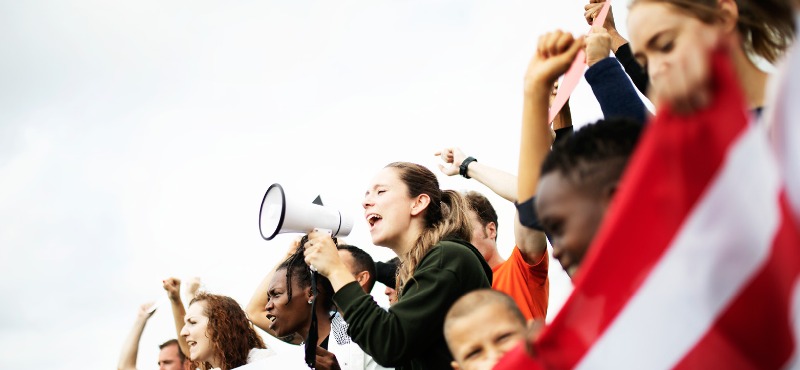America was built on the backs of protestors. In 1765 and 1766, crowds loudly protested British taxes and other oppressive laws against those in the colonies. When the Constitution was written, it gave the right to assemble to every American citizen through the First Amendment of the Bill of Rights. Since then, protesting has shaped the nation and brought about changes like the end to slavery, the right for women to vote, the civil rights movement in the 1960s, and, most recently, LGTBQ+ rights.
Lately, there has been more of a trend by states and the federal government to restrict and even criminalize some aspects of protesting. The First Amendment does allow the government to put some restrictions on protesting. However, these limits must be narrow, and they cannot violate the rights issued in the Constitution. In Ohio, a new bill proposed by the state legislature seeks to make some protesting actions illegal. Time will tell if this bill violates the right to assemble and protest.
What Protest Protections Exist in the U.S.?
The right to assemble is guaranteed by the First Amendment of the U.S. Constitution. Over time, the right to assemble has been used by groups to establish legal protections for unorthodox groups and for the right to protest. The Supreme Court extended the right to assemble in De Jong v. Oregon, where it extended the right to all states and declared that the right to peacefully assemble was as equally fundamental as the rights of free speech and a free press.
The right to assemble allows citizens to engage in mass communication through the use of demonstrations, gatherings, picket-lines, and parades. It is often treated by courts as an expansion of the right to free speech and freedom of expression.
The First Amendment is a prohibition on Congress and the states. It stops them from passing legislation that reduces or contradicts the right of citizens to peacefully assemble. However, the right to assemble is not absolute, and the government can impose limits on the time, place, and manner of a peaceful assembly. These restrictions must not be on the content of the speech and must be narrowly tailored to serve a government interest.
What is the Purpose of Anti-Protest Laws in the U.S.?
An anti-protest legislation wave began in 2016 and 2017 as a response to the Standing Rock protests. These protests captured the world’s attention because of intense media coverage and police and legislative decisions. For months, thousands of Native Americans and environmental activists protested the construction of a pipeline through native land. The Obama administration denied a key permit to the builders; however, the Trump administration reversed the decision a few months later.
The worldwide coverage of the protests led federal and state legislators to begin trying to pass laws that would limit the rights of protesters and the right to assemble. By 2017, the number of anti-protest legislation had doubled and almost 60 bills had been introduced at the state level. At first, most of the bills were struck down for being blatantly unconstitutional.
This changed in 2018 when the American Legislative Exchange Council (ALEC) formulized The Critical Infrastructure Protection Act. This is a policy model that criminally penalized and fined anyone for trespassing on “critical infrastructure”. It also provided guidelines for penalties and potential financial liability for any organization that conspires to assist protesters. This model seeks to protect the oil and gas industry from protests. While doing so, it also redefines the meanings of terrorism, trespass, and sabotage. It also allows organizations to be penalized for the activities of individual actors.
The Ohio Bill
Ohio Senate Bill 33 follows ALEC’s policy model by seeking higher penalties for trespass and property damage that may affect critical infrastructure. While the willful destruction of property and trespass is already illegal in the state, the new bill would grant heavier penalties and further criminalize anti-protest actions. If the bill is passed, activities that may be criminalized include offering rides or medical aid to protesters. The bill is so broad that even chanting along with protesters could be interpreted as supporting damage to critical infrastructure, which means you could face criminal charges for something like chanting.
Passing the bill will be an uphill battle. A recent similar law was struck down in 2019 in South Dakota. There, the state legislature had passed several anti-protest laws that would criminalize several protest actions and riot-boosting. The laws also sought to penalize anyone who assisted protesters or engaged in actions that could be seen as supporting damage to critical infrastructure in the state. The law was struck down by a federal judge, which sets a legal precedent that will support ending and restricting the growing expanse of anti-protest laws.
Jim Owen is one of the most accomplished criminal defense lawyers in Columbus, OH and co-owner of Koenig & Owen, LLC. For over 25 years, Jim has been collecting “not-guilty” verdicts in homicide cases and other complex criminal charges.
Reference: What Are the Anti-Protest Laws in the U.S.?
3,404 total views, 1 views today

